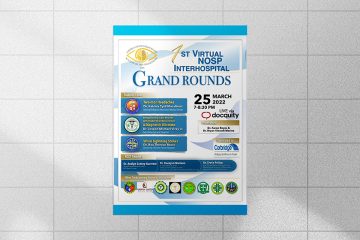The VRSP Mulat Mata Project: Saving Filipinos from Diabetic Retinopathy Blindness
Written by: Glenn Alog, MD
Every 14th of November, World Diabetes Day (WDD) is celebrated to increase public awareness regarding diabetes and its complications. This year’s theme continues from 2021’s “Access to Diabetes Care”1which aims to identify diabetes mellitus (Type 2 DM) risk in order to reduce the burden of the disease. It stresses the importance of access to information and care leading to prompt treatment and management of the disease. Common complications of diabetes include visual loss, kidney failure, heart attacks, stroke, nerve problems, and poor wound healing that could lead to amputation.2 Among the mentioned problems, retinopathy can often present without symptoms. However, regular screening and examinations can help identify this silent complication of diabetes.
Locally, the Vitreo-Retina Society of the Philippines (VRSP) created the Mulat Mata project in cooperation with the Novartis Excellence in Ophthalmology Vision Award (XOVA), to promote timely screening for diabetics to ensure early diagnosis and treatment of diabetic retinopathy (DR). The project is a comprehensive program which is composed of the following objectives: (1) awareness campaign, (2) education, (3) DR screening, and (4) research. This project was launched on October 8, 2020 and has recently been recognized by the Center for Health Development-I as one of its Gawad Kalusugan awardees for its commitment in ensuring that health programs are provided to the entire populace of Region 1.
Last November 14, 2023, the VRSP, through its Mulat Mata program, conducted its DR screening program in San Juan, La Union in cooperation with DOH Region 1, San Juan LGU and Ilocos Training, and Regional Medical Center (ITRMC). The event used a fundus camera machine through undilated pupils to screen for sight threatening diabetic retinopathy (STDR) or referral-warranted DR, which is defined as severe nonproliferative diabetic retinopathy or worse, with or without the presence of center-involving macular edema. The one-day event proved fruitful as the team was able to conduct diabetic retinopathy screening for 66 patients wherein 57 (86.4%) had DM, 7 (12.3%) had any stage of DR, 4 (7.025%) had STDR and 6 (10.5%) had other significant eye problems.
Still aligned with the WDD, another DR screening event was done on the same day, in cooperation with PAGCOR at the Casino Filipino New Coast Hotel, City of Manila. The patients were mostly employees of the nearby facility with varying degrees of awareness regarding diabetes or DR. A total of 181 participants were screened, wherein 79 of which were diabetics (43.6% of the total screened). Results were immediately evaluated onsite and showed 20 (25.31%) diabetics with any stage of diabetic retinopathy and 9 patients (11.4%) (STDR). The diabetic retinopathy screening was also able to identify 14 other significant eye problems (7.7%) while only 2 (1.1%) sets of ungradable images were noted. Patients with findings were triaged for referral to nearby eye care facilities for appropriate management.
The recent DR screening events have significantly helped address preventable blindness but is just part of the greater goal of dealing with diabetes and its complications. The challenges in this endeavor include the carrying out the actual treatment for the people with complications. There is still potential to improve early detection, timing and reach of the program especially in the far-flung parts of the country outside of the major cities.
In line with the WDD’s thrust of increased access to diabetes care, building up awareness could be one of the most important determinants of success in the battle against diabetes. Educating people at risk, people with the disease and primary healthcare personnel3 can make a difference in the promptness of intervention. Given that diabetes is a chronic morbidity and the Philippines is a country with a significant burden from the disease, the VRSP remains steadfast in its commitment to ensure that diabetic retinopathy screening should become a more regular and more widespread activity not just every November 14, but the whole year round.
1 https://worlddiabetesday.org/about/theme/
2 https://www.who.int/campaigns/world-diabetes-day/2023


















